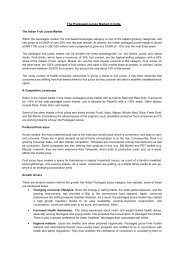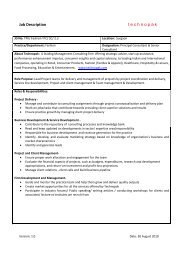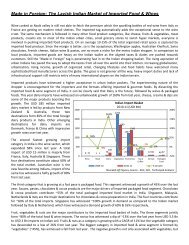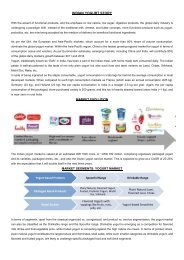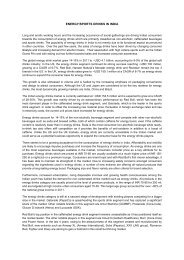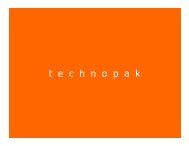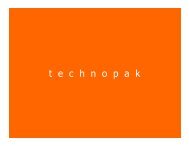a quarterly report by - Technopak
a quarterly report by - Technopak
a quarterly report by - Technopak
Create successful ePaper yourself
Turn your PDF publications into a flip-book with our unique Google optimized e-Paper software.
perspective<br />
a quar terly repor t <strong>by</strong><br />
Volume 02 / 2009<br />
| Volume 02<br />
Unique Dynamics and Growth Drivers<br />
of the Indian Education Sector<br />
Education is the key to unlocking and building lasting value in a robust economy. For any country to grow<br />
and prosper, a well positioned educated young population is the fundamental requirement to meet the<br />
demands of an increasingly global economy and productive value creation. Over 50% of India’s Education<br />
sector is private (in the US, the private sector’s share is 32% and in China it is 25%) and in 2008 this stood<br />
at US$ 40 Bn. This is projected to grow to US$ 70 Bn <strong>by</strong> 2013 and US$ 115 Bn <strong>by</strong> 2018 (from a demand<br />
growth perspective, if supply keeps pace). We have a large demand-supply gap, and on average poor to<br />
middling quality. There is clearly an opportunity for more private players to enter the education space.<br />
Few unique drivers of the education sector in India are interesting to examine. Historically, education has<br />
been delivered in the country <strong>by</strong> the government or through “Non- profit” charitable trusts. The number of<br />
quality institutes imparting higher education are limited, inducing tremendous competition for the limited<br />
number of seats available in the IITs, IIMs and other quality institutions. Higher education in the private<br />
sector is not generally perceived as a quality alternative. The Indian mindset is culturally geared towards<br />
choosing limited study streams such as engineering, medicine and management. There is a need to link<br />
the employment needs in India to the enrollments in higher education, in order to create a pool of productive<br />
employable workforce.<br />
Exhibit 1<br />
More than 55 % of the Indian population will be under the age of 25 <strong>by</strong> 2010, This would<br />
Demographic Advantage<br />
lead to increased demand for quality higher education and a skilled workforce.<br />
High income households (income more than US$ 10,410) expected to increase from 5<br />
Increasing Affordability<br />
Mn to 14 Mn <strong>by</strong> 2018 resulting in higher affordability. This will propel awareness towards<br />
consumption of education as a priority and an essential tool for career growth.<br />
India, once considered an agrarian economy is now dominated <strong>by</strong> the services sector.<br />
The share of services has increased from 31% in 1991 to 55% in 2007. This increase<br />
Knowledge Led Economy<br />
in the services sector has led to a steady increase in the demand for an educated skilled<br />
workforce.<br />
A large young working population with a median age of 24 years, nuclear families in urban<br />
areas, along with emerging job opportunities in the services sector driven economy has<br />
Increased Participation of Women in the Workforce<br />
led to increase in working women in India. The population of working women is estimated<br />
to touch more than 25% <strong>by</strong> 2015.<br />
Technology Aided Delivery Increasing penetration of technology will aid virtual learning and education delivery.<br />
Globalization has led to the increase of newer employment avenues. Industries such as<br />
outsourcing (KPO, LPO), legal, retail, aviation, animation, healthcare, supply chain &<br />
New Employment Avenues<br />
logistics, have increased employment opportunities, and the demand for highly skilled<br />
manpower<br />
Sizeable Investment Needed to Create<br />
Additional Capacity<br />
The financial potential in all segments of education in India is huge. The demand-supply scenario as per the<br />
current and projected enrollment ratios at the K-12, higher education and vocational education segments<br />
indicate the need for huge capacity creation. The investments required to build this capacity have been<br />
estimated below at very conservative assumptions.<br />
69 | Forecasting the Financial Potential in Education<br />
The Growth Drivers of the Indian Education Sector<br />
Source: <strong>Technopak</strong> analysis & industry <strong>report</strong>s



